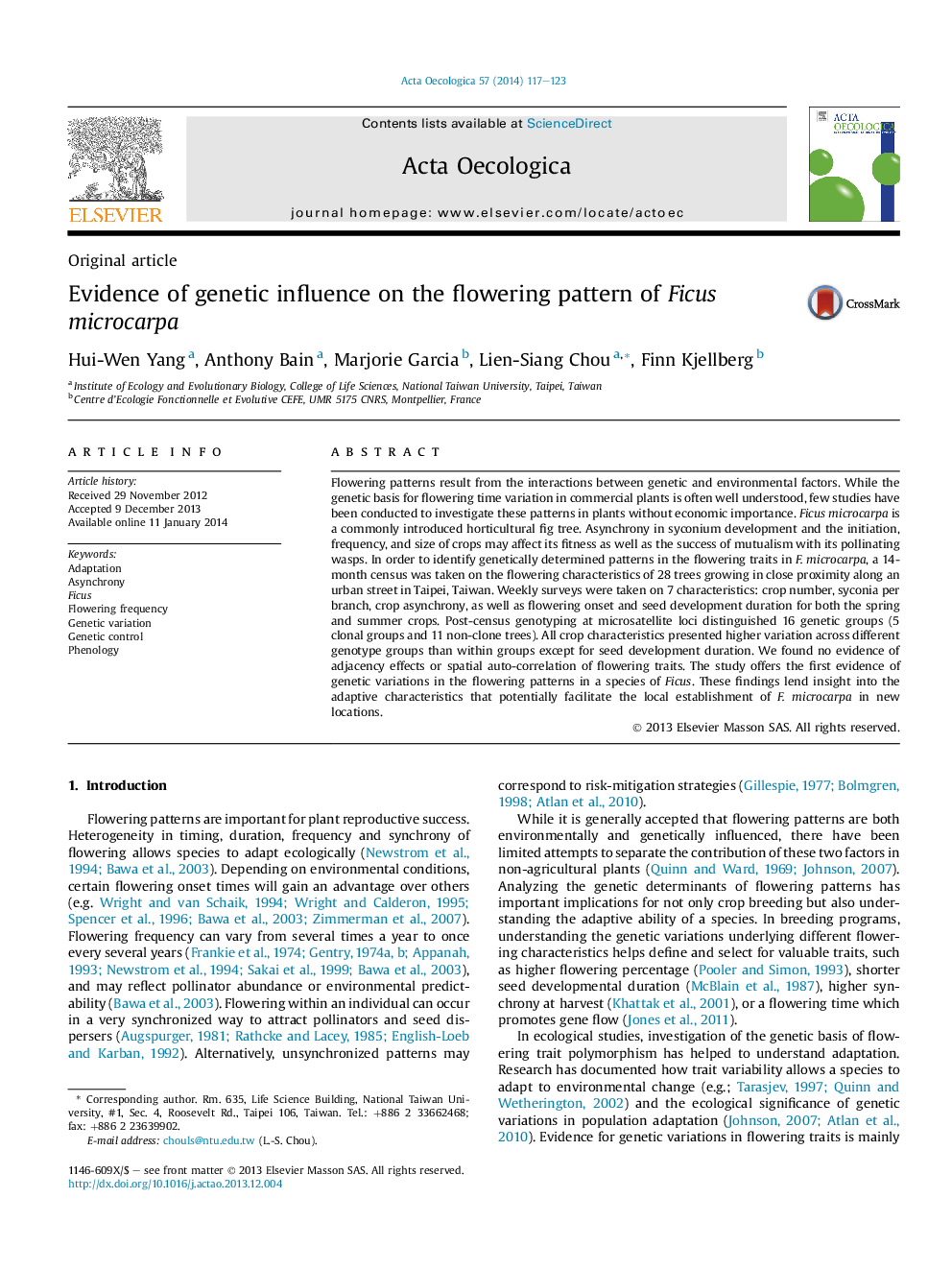| Article ID | Journal | Published Year | Pages | File Type |
|---|---|---|---|---|
| 4381046 | Acta Oecologica | 2014 | 7 Pages |
•28 Ficus microcarpa trees were genotyped to compare flowering traits.•Genetic effects were shown by crop number and intra-crop asynchrony variations.•Syconium number per branch and flowering onset times varied across genotypes.•Seed maturation time did not differ significantly across genotypes.
Flowering patterns result from the interactions between genetic and environmental factors. While the genetic basis for flowering time variation in commercial plants is often well understood, few studies have been conducted to investigate these patterns in plants without economic importance. Ficus microcarpa is a commonly introduced horticultural fig tree. Asynchrony in syconium development and the initiation, frequency, and size of crops may affect its fitness as well as the success of mutualism with its pollinating wasps. In order to identify genetically determined patterns in the flowering traits in F. microcarpa, a 14-month census was taken on the flowering characteristics of 28 trees growing in close proximity along an urban street in Taipei, Taiwan. Weekly surveys were taken on 7 characteristics: crop number, syconia per branch, crop asynchrony, as well as flowering onset and seed development duration for both the spring and summer crops. Post-census genotyping at microsatellite loci distinguished 16 genetic groups (5 clonal groups and 11 non-clone trees). All crop characteristics presented higher variation across different genotype groups than within groups except for seed development duration. We found no evidence of adjacency effects or spatial auto-correlation of flowering traits. The study offers the first evidence of genetic variations in the flowering patterns in a species of Ficus. These findings lend insight into the adaptive characteristics that potentially facilitate the local establishment of F. microcarpa in new locations.
